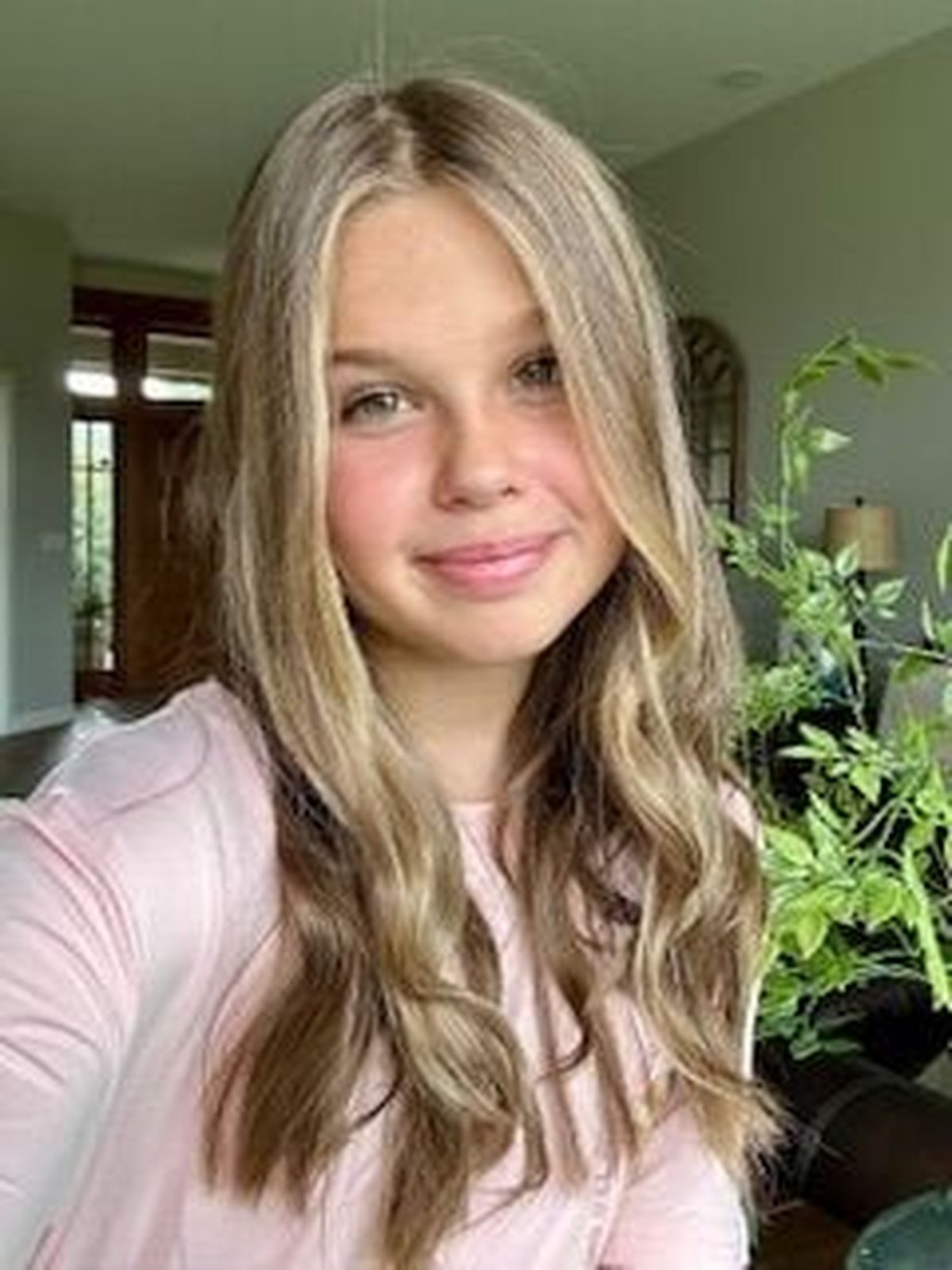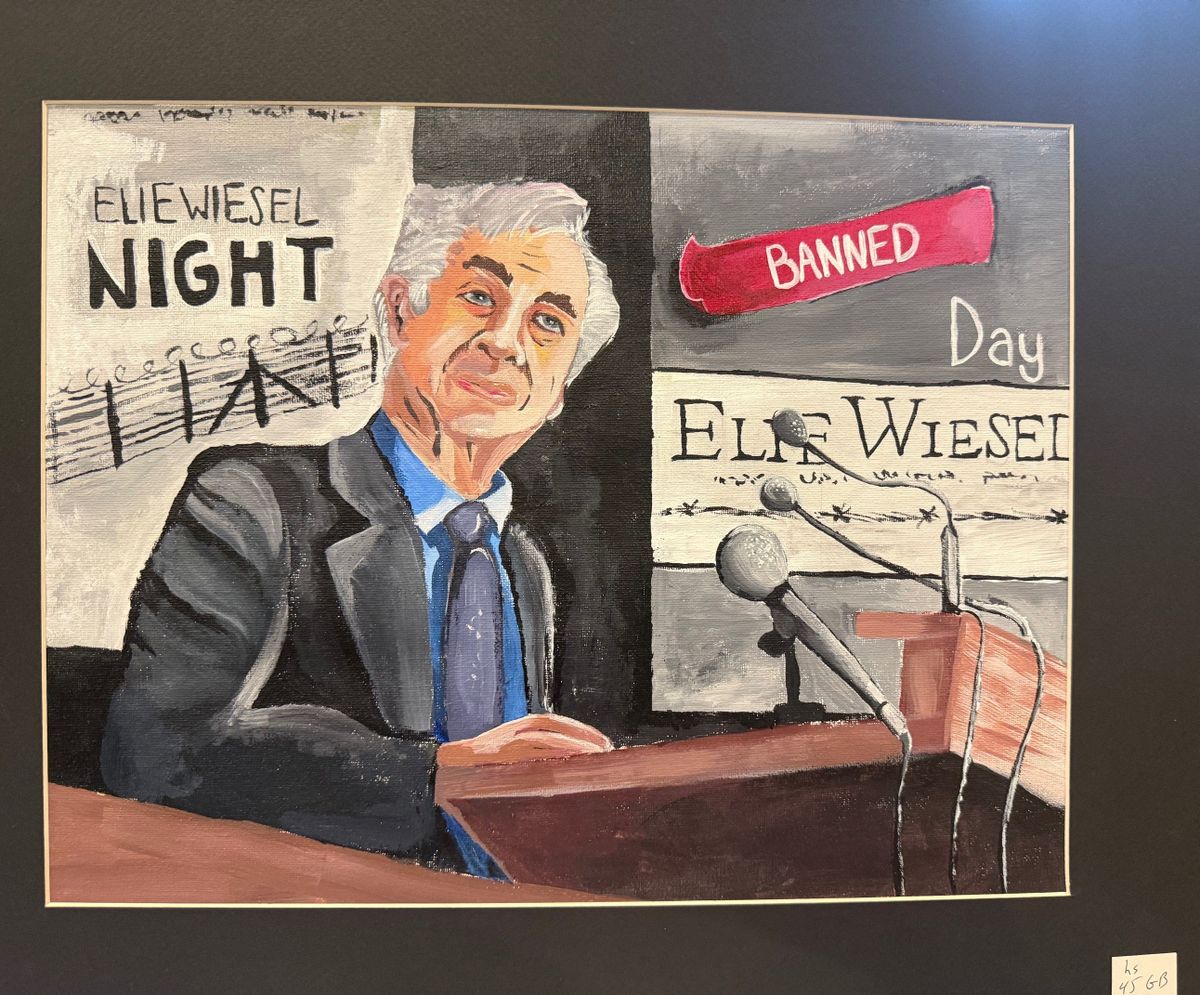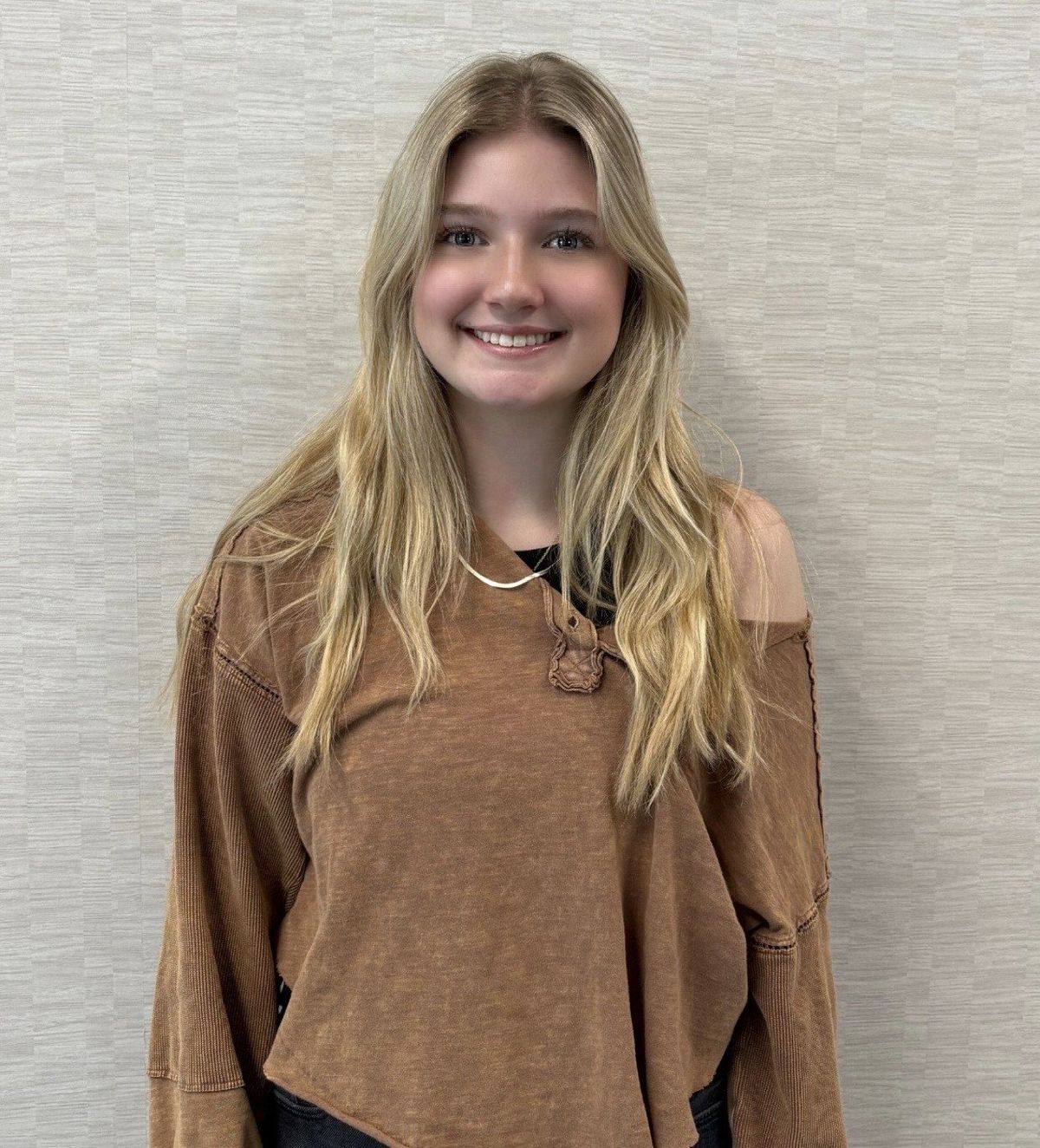Here are the winners of the annual Spokane area art contest bringing awareness to the Holocaust
“Elie Wiesel Portrait,” by Grace Brinkmann, a junior at Ridgeline High School, won first place. (Courtesy)
From staff reports
A portrait of author and Holocaust survivor Elie Wiesel by a Ridgeline High School student won the top prize among high school students in the Jessica Stein Memorial Art Contest this year.
More than 100 entries were received from middle and high school students in the Inland Northwest.
For the 10th annual contest, the theme was “Survival and life after the Holocaust,” commemorating 80 years since the end of World War II.
The contest is part of the Spokane Community Observance of the Holocaust, which is organized by Temple Beth Shalom.
The observance will be held at 7 p.m. April 23 at Temple Beth Shalom. The Ferris High School Chamber Orchestra and Spokane Jewish Community Choir will perform, and there will be a candlelight vigil. The winning artwork will be displayed.
Below are the winners of the contest and artists’ descriptions of their work. Some have been lightly edited for clarity.
HIGH SCHOOL
First place
“Elie Wiesel Portrait,” by Grace Brinkmann, a junior at Ridgeline High School
This artwork is a tribute to Elie Wiesel’s impact and a call to protect the stories that teach us about humanity, morality and the consequences of indifference.
In my portrait, I show Wiesel alongside two of his most influential works, “Night” and “Day,” which depict his experiences and reflections on the Holocaust. The red “BANNED” sticker symbolizes the increasing censorship of literature that sheds light on brutal truths.
Attempts to restrict access to Wiesel’s writings threaten to erase the very history we must remember in order to prevent such atrocities from recurring.

Second place
“Shattered,” by Alistair Rideout, a senior at University High School
During my research on the prompt, I was inspired by Carla Peperzak, who worked in the Dutch resistance against the Nazis, and Holocaust survivor Nesse Godin. I found a quote from Nesse: “What was, we cannot change. But what is, and what will be, we can make different.” I carved this quote in Hebrew into a Kiddush cup that I made from clay.
The base of the cup has grapes along the bottom, which is common on kiddush cups to signify the circle of life. To me, it signifies that life goes on even after such a tragedy. Part of this circle of life is the retelling of stories to the future generations.
The bottom of the cup shows remnants of a mucky liquid to signify that Jews were made to think their religion was dirty, causing many to be scared to practice religion after.
I broke the cup to signify how the Holocaust shattered those who were forced to live through it. Each of the shards has two pictures representing life after the Holocaust.
One shard shows the tree of life, a symbol of stability and growth. Some survivors were able to find this afterward, like Nesse, who was able to reunite with her family and continue to create a new one. Others had only the memories of family that would always be with them.
The next shard depicts a rainbow, which signifies that even after the rain of horrors, beauty can still be found. The other side of this shard depicts ash, signifying how memories of the camps could have smothered them like the ash from the crematoria at the death camps.
The next shard depicts a thunderstorm, representing the bad days that are inevitable after such a traumatic event. On the back , I painted a butterfly on barbed wire, symbolizing those who did not even get a life after.
The final shard shows an eye with a tear to represent the many survivors who share their experiences to help us understand, even when it is difficult for them.
Finally, I glued the shards back together and painted the glue with a pearlescent paint to signify that even when shattered, the hope for a better life was the glue to put them back together. They would never be the same, but they would still be able to find joy.

Third place
“Family Gathering,” by Aimee Thompson, a sophomore at Ridgeline High School
Lotte Weiss is the inspiration for my artwork. She survived Auschwitz and other WWII concentration camps. Unfortunately, her parents and five siblings did not make it.
After the war, Lotte moved back to Bratislava in Slovakia, where she met her future husband. They married and moved to New Zealand where they had two boys. My painting shows a dinner scene in which Lotte and her “second family,” as she calls it, are getting ready to eat dinner. Surrounding her are the memories of the family she lost during the war. This artwork depicts how even though family members may be gone, their memories can still reside in our hearts and homes.
MIDDLE SCHOOL
First place
”Never Forever,” by Amelia Russell, an eighth-grader at Salk Middle School
My piece is meant to symbolize the fact that something broken can still produce something beautiful. This artwork is based off of the survivor, Fred Terna, who was a prisoner at Auschwitz, Kaufer and Terezin from 1943-45. After the Holocaust, he became an artist who created works such as “Reaching for Inclusion,” “Cleft Gate Post at the Absence” and “Abstract.” The rose growing out of the broken vase is supposed to show that no matter how much you’ve been put through, like Fred, you can still create something beautiful.
Second place
“Summary of Choosing Happiness,” by Devany Heimbigner, at eighth-grader at Salk Middle School
My art piece is inspired by Holocaust survivor Eddie Jaku. Scarred by the past, he always found a way to look forward, forgive and to be happy. Eddie was the only survivor out of his entire family during the Holocaust. After seven torturous years of brutal imprisonment, Eddie was rescued by an American tank crew.
He went on to marry. Eddie stated that the day he and his wife, Flore, welcomed their first son into the world is the day he decided to choose happiness. In my art piece, you will see a box at the bottom that looks kind of like one of the four concentration camps that Eddie was forced to endure during the Holocaust.
Moving up my art piece, you will see some watercolor paintings. The bottom ones represent the most difficult memories of his imprisonment, losing his entire family, his beloved dog, the torture he endured, and his identity that was ripped from him by the Nazis. Toward the top these were his happy memories; memories he made with his beloved wife and their two sons. At the very top is a flower to symbolize that beyond all odds, Eddie chose happiness and to let his life bloom for the rest of his 101 years on this earth.
Third place
“Rena Quint – Brokenness into Beauty,” by Brooke Rettedal, an eighth-grader at Northwest Christian School
Rena Quint could not remember her life and family before the Holocaust, and the trauma of the Holocaust made it so hard to want to remember. She also had to decipher who she was between the four identities she had been given, including a boy’s identity in a glass factory. (Portrayed through the glass frames.)
The first glass frame and clear heart represents who she was before the Holocaust, how it was clear who she was, and who her family was.
The second frame and broken glass represent the brokenness the Holocaust had left her with.
The different puddles of paint represent how she felt internally divided by four identities that she was given by different adoptive parents, in order to hide from the Nazis.
Her foggy heart represents her pain of having barely any memories of the family she held so dear.
The third frame represents her rebuilding her life, starting a family and seeking information about life before the Holocaust. The little bit of color in her heart showcases her starting to use the pieces for good.
The last frame and colorful heart represent how she would never be the person she was before, nor have the memories she did before. But she took the brokenness the Holocaust left her with and turned it into the amazing, beautiful person she is today, one who shares her story.









